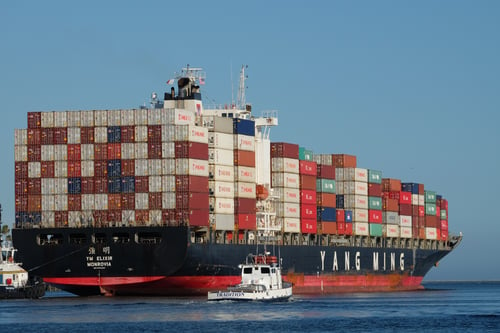Amazon, one of the world's largest online retailers, is building its shipping containers as well as chartering private cargo ships and planes to control shipments of online orders better. However, this move comes at significant upfront costs. Not only has the wait time for containers increased due to the COVID-19 pandemic, but the cost per container has risen from about $2,000 pre-pandemic to $20,000 today as per CNBC.
Amazon’s long-term strategy of producing its shipping containers is paying off
Amazon has been doing this for years, but it’s only just starting to pay off, as the busiest and most chaotic ports in the US are seeing long waits for dock space, with some ships waiting up to 45 days. Having ownership of these shipping containers, Amazon has the flexibility to control where its goods go and avoid the busiest, most backed up ports.
For example, instead of sending shipping containers through a LA area port, Amazon delivers the cargo to Washington state and then trucks it down to LA. This strategy of thinking outside the box allows it to bypass waiting for weeks to offload products and deliver the merchandise to its warehouses in a matter of days. Amazon attempts to avoid ports altogether for higher-margin items by leasing long-haul planes that can transfer smaller amounts of cargo from China to the US.
Another advantage to Amazon creating its containers is that once they are in the US, the containers stay in the domestic transportation system and can be used on trains and other ships. Normally, they are owned by another company and have to be returned to the country they come from (usually China). By creating its containers, Amazon has guaranteed that shipping containers will be available as needed.
The role of supply chain visibility and planning software
Undoubtedly, Amazon uses supply chain visibility software to improve transparency in its complex supply chain networks while increasing the quality and speed of the products delivered. Because they have vertically integrated their shipping processes for some items, it’s necessary to track items from their suppliers, manufacturers, and warehouses to the end users.

For Amazon Prime members, many items can be delivered in 24 hours (or less), which means those products need to be restocked in 24 hours (or less) to keep up with customer demand. Supply chain planning software can provide tools to Amazon for demand planning, inventory planning, replenishment planning, and order planning.
This one-day turnaround expectation of products for Amazon and its competitors has increased market demand for supply chain solutions, as evident by the increase of supply chain visibility products and web traffic to the category itself on G2 over the past four years.

Amazon still isn’t immune to supply chain issues
This isn’t to say that Amazon is immune to the supply chain disruptions occurring worldwide. According to CommerceIQ, Amazon’s out-of-stock items have risen 34%, and the average price has increased by 25% since January 2021. When there is an increase in transportation costs, those costs ultimately get passed down to the consumer. In 2020, Amazon spent more than $61 billion on shipping, up 60% from 2019, consequently trying to control as much of the shipping process as possible and are now shipping 72% of its packages.
Other major online retailers are starting to follow suit. Walmart, Costco, Home Depot, Ikea, and Target have all begun chartering their own cargo ships in order to bypass the busier ports and get their products in the hands of the consumers quicker.



 by Nathan Calabrese
by Nathan Calabrese
 by Nathan Calabrese
by Nathan Calabrese
 by Nathan Calabrese
by Nathan Calabrese